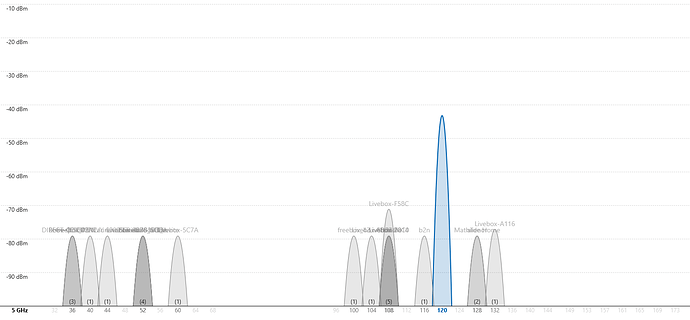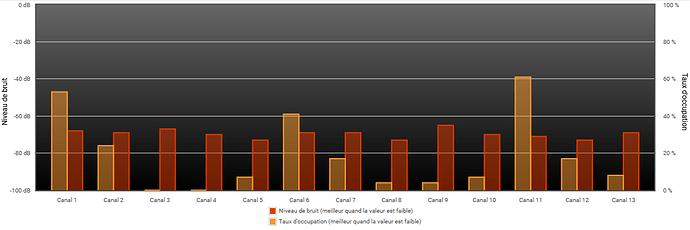I’ve put together some ideas here which are likely to be already present around the forum but which I thought it would be useful to gather as a reference point.
I am of course familiar with the Wiki, FP2: Solving Wi-Fi connectivity problems with 5 GHz networks, which however concentrates on a specific model of Fairphone (FP2) and pretty much a specific router, the Fritz!Box 5490. In particular, it makes recommendations which are doubtless appropriate for the equipment (and indeed makes no pretence to being a general rule of thumb) but which seem to have made their way into “FP culture” to such an extent that I had gone as far as setting my router to a fixed channel in order to conform to this received wisdom. So I thought I might contribute some remarks to widen the horizon a bit.
The Wifi setup in your home or office is composed of several components and each of these needs your attention if you want to achieve the best performance your equipment, collectively, can give.
Probably the most important, but also possibly the most neglected, component is the router itself.
Routers vary enormously in configurability, i.e. what their designers have allowed the user to modify or adjust, and the ease with which these modifications can be made (in other words the quality of the interface). It’s not possible to detail individual routers here, but it’s really worthwhile taking the time to get to know your router and in particular it’s important to know the current settings in detail, and the extent to which they conform with current standards and recommendations.
To illustrate this, here is an example from my own experience.
My router provides connectivity in both 2.4 and 5GHz bands and naturally I was expecting my FP3+ to use the 5GHz option. It didn’t, remaining obstinately on a 2.4 channel that I had set on the router on the basis of my own judgement of the local environment (about 80 networks!) Somewhere I read about Fairphones being happier with a fixed channel between 36 and 112. I later traced this advice to the wiki already cited. So I set the router to use channel 112. This did not persuade the FP to adopt 5GHz. I finally took the time to look at the router’s configuration in detail. I made two changes, the security and the channel selection, which I set to automatic with Dynamic Frequency Selection (DFS). The latter implies a 10 minute wait after switching the router on, while it thoroughly scans and chooses a channel.
Changing the router’s configuration regarding security, from an obsolete WPA1/WPA2 AES/TKIP to a setting aligned with current standards, i.e. WPA2 authentication and AES encryption, allowed the FP to choose 5GHz on channel 120 (selected by the router) which is above the 112 commonly cited in this forum.
This change has been beneficial for all my devices using Wifi, not just the FP, so it was really worth taking the time. My conclusion was that the important change had nothing to do with the channel, but was to do with security. By enabling up-to-date security, Android (not I think specially FP) was “happy” to use the higher frequency channel. I haven’t yet taken the time to explore the FP’s capacity to employ other channels, but I have clearly shown that the 112 limit does not apply to the FP3 - certainly not in all cases. This illustrates why it’s important to keep an open mind with varying equipment.
A heavily occupied 2.4GHz band
The unencumbered horizon of the 5GHz band at the same location. Graphics courtesy Matt Hafner’s WiFi Analyzer
Here are some basic router settings that need to be checked, with values that appear to me to be current or acceptable as of November 2021. They will be rapidly out of date.
2.4GHz:
Standard: 802.11n; channel width 20MHz (setting to a wider value may cause problems for your neighbours so use with consideration). Channel selection automatic unless the neighbourhood is very crowded like mine, in which case do some measurements and choose a channel that seems the best to you overall. Your router may provide information to help you, such as channel occupancy, noise levels and so on.
Noise levels (red) and Occupancy (yellow) in the 2.4GHz band as seen by the router. At least you can see the channels to avoid.
5GHz:
The joy of 5GHz is that there’s much less overpopulation (as intended in the standard of course). This is partly due to the fact that the range (physical operability distance) is less than the lower frequency band, although the capacity for data through-put is enormously increased. In my case, most of the channels are untenanted so there’s plenty of room.
Standard: 802.11n and 802.11ac or higher according to equipment compatibility; channel width: 80MHz; channel selection: automatic (hooray!) with DFS.
Security:
Authentication: WPA2 (or WPA3 but this is still considered experimental); encryption: AES. Security technology changes more often than the radio standards so move up as soon as the devices and software allow (this means doing updates of firmware, drivers etc.)
The devices.
The configuration of each device’s wireless network adapter needs to be checked to make sure it is using the latest possible versions of standards compatible with what the router is providing. This includes the standard (sometimes called “mode”) such as 802.11ac, channel width (automatic is usually the best), preferred band (5GHz if available). Make sure possible power management settings are compatible with your needs.
Fairphone 3(+).
These are the current settings on my device which provide satisfactory performance. Wi-fi frequency band: automatic (this enables the phone to use a 2.4GHz channel if higher band is not available, bear in mind mobility, we’re not just using Wifi at home). In my experience, the FP3 initially uses 2.4GHz when Wifi is turned on, and moves to 5GHz about 30s later after checking the availability of channels.
Forum members: Please feel free to expand or update this or suggest changes.


